Matador Network's Blog, page 1104
May 3, 2019
The best Iberian Rift road trip

Travel, set out southwest from Madrid past the burnt-gold fields of the Spanish state of Castilla and then through the dark green holm oak dehesas, or managed forests, of Extremadura state. Trace the Tagus River as it renews its sapped strength with snowmelt from the Sierra de Gredos mountains, giving it the power to slice through the granite bedrock of this hard land on its way to seemingly far-off Lisbon and the sea. This is a road trip through la Raya, the Iberian Rift. A ride that hugs both sides of the border and blurs the edges of Spain and Portugal into a truly Iberian stew.
One of the last wild corners of Europe
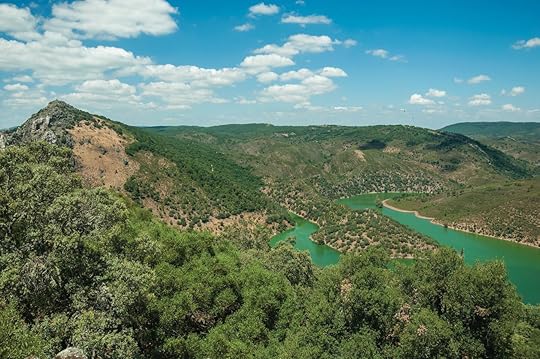
Photo: Celli07/Shutterstock
Out here past Talavera de la Reina, cities and towns no longer adhere to the banks of the deep greenish slash of water. After centuries of back-and-forth religious and cultural fighting, towns are prudently set back far enough away from the flowing border. The further west you go, the larger the skies seem to get. Storks, eagles, and vultures patrol the sky, making this expanding blue ceiling their own. Underneath, fabled fighting bulls and acorn-scavenging black pigs shape and mold the scrubby sunburnt landscape. Large scale hunting preserves spread out beyond sight from the highway, fencing in the deer that attract hunting parties from around the world. This is one of the last large-scale, wild corners left in Europe.
Wide open as these spaces are, birds and beasts are not the only ones that call this region home. Continue west and dip past the Sierra de San Pedro and between the cork oak tree groves that spread out in each direction, and white specks of Portuguese villages come into view, proof that people have also left their mark on this land.
First stop is a small Spanish village set where the Sever River meets the Tagus. Cedillo began as a Portuguese fishing village and its name traces its roots back to when it was ceded to the Spanish in one of the back-and-forth wars of history. Today it serves as the launching point for a different kind of water adventure from the crowded beaches that most people associate with Spain.
The village is now the departure point for El Balcón del Tajo, a riverboat that cruises the rivers of the Taejo International Park, also known as the Tagus Natural Park. Aboard you can get a closer look at some of those overhead vultures and enjoy some of the best birding on the continent. Get off and on and explore the nearby villages of Herrera de Alcántara, Santiago de Alcántara, Lentiscais, and Castelo Branco.
A castle overlooking everything

Photo: ARoxoPT/Shutterstock
Heading west again as you pass through Valencia de Alcántara, leaving the last remaining Spanish villages behind, a jagged dorsal fin rises out of the surrounding green patches that cluster around courses of water that feed into the river. Like some sort of prehistoric Border Wall, this granite fence signals that the border is near — though, ever since the opening of borders with the EU, confused messages from your cell phone carrier are about the only other signal telling the traveler that they are in a grey area between countries.
In the hazy distance, the once impregnable mountaintop fortress of Marvão, Portugal, rises into view. Founded by the rebel Ibn Marwan in the times of the Caliphates, when the Iberian Peninsula was in Muslim hands, you’d be hard pressed to find a better spot to perch a castle. The narrow road up begins at a crossroads crowded with restaurants with some of the best split roast chicken available, then corkscrews round and round in dizzying turns until you rise up over 2,500 feet from the summer heat that can bake the land below. Whitewashed homes with tiny doors, in the Portuguese Alentejo style, line the narrow streets that lead to the impressive fortress at the top of the village. The castle itself can be seen from as far away as the town of Castelo de Vide several miles due west. From Marvão, you can see everywhere.
A two-thousand-year old bridge spans a chasm
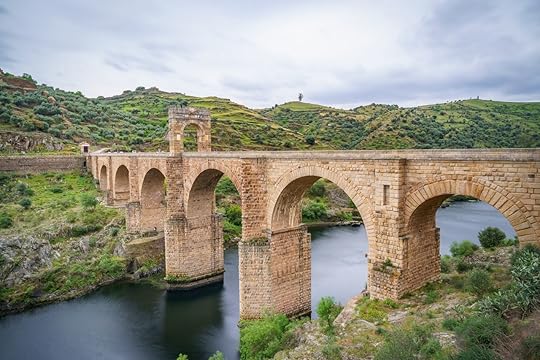
Photo: Ivan Marc/Shutterstock
These backroads of Portugal seem like colorized movie sets in comparison with the six-lane highways that whisk you from point A to point B as fast as possible. If you go just enough out of your way en route to Castelo de Vide, you’ll find one of the most photogenic stretches of road in the country, the N261-1. Framed by towering whitewashed ash trees, this tiny strip of asphalt makes even the smallest European car seem wide. It’s a highway that proves that the journey is often more interesting than the destination itself.
From here you can either head on to the largest Portuguese city in the region, Castelo Branco, or double back towards Spain for another unique driving experience. Since the Romans were in charge, the Tagus has served as a natural border, one that separated but at the same time hindered the trade in silver from the north. A quick look at a map of the region and you’ll see the word alcántara several times. From the Arabic word al-kantarat, or bridge, it became a popular place name in the area — and yet they all stem from one particular crossing.
The town of Alcántara sits high above the Tagus, and as you move towards it, the deep valley looks impassable. Then, it appears. Spanning the 650-foot chasm cut by the Tagus, the 2,000-year-old Roman bridge connects each side like a temple on stilts. Romans, Visigoths, Moors, warring French and English troops, and the trailer trucks of today have all taken advantage of the only way to cross the river for more than 50 miles in each direction.
Another Roman bridge and the best bread
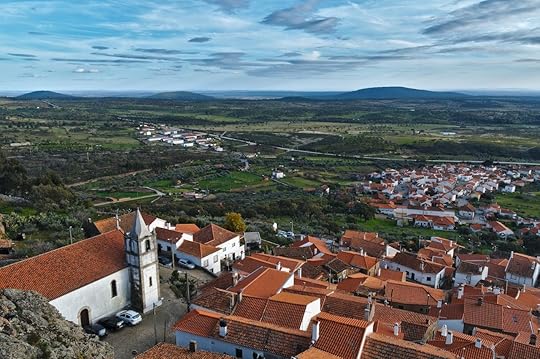
Photo: AngeloDeVal/Shutterstock
The road continues to wind north, paralleling the border until it meets the Erjas River, which here serves as the countries’ border, and yet another Roman bridge. This bridge, of more modest proportions, neatly frames the nearby hilltop town of Segura and crosses into Portugal once again.
Farther on, the tiny village of Penha Garcia smells like freshly baked bread. The local gastronomy on each side of the border is somewhat similar due to shared basic ingredients. If there is one thing that the Portuguese do better, though, it’s bread — and in this village you can find some of the best in the region.
As this area used to lie at the bottom of the sea, evolutionary twists have left here one of the richest deposits of fossils that can be found on the peninsula. That said, not even the most prehistoric marine creature looks as out of place as the American tank that is inexplicably parked in Penha Garcia’s main square.
Homes amongst the boulders
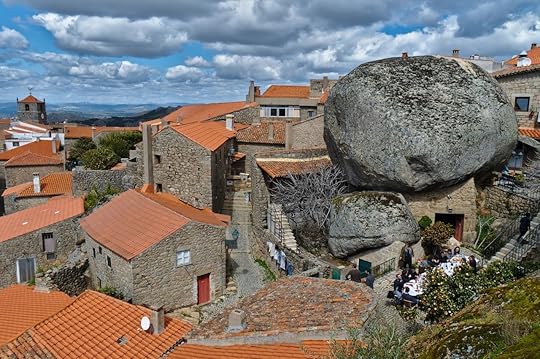
Photo: AngeloDeVal/Shutterstock
The higher you go in Portugal’s Beira province, the larger the stones seem to get. Pebbles become stones, which in turn become boulders, and in Monsanto they become homes. For millennia, people have been taking advantage of the wide arches between these enormous blocks of granite to build their homes among the nooks and crannies.
It’s been called the most Portuguese village in Portugal but here you won’t find the whitewashed walls or the windows with the yellow trim you find in other villages. Yet as the sun goes down and the summer heat abates, neighbors in low chairs sit out front of their doors under the cool shade of the granite monoliths and the cold rock becomes part of the people and their place.
There are places you travel through, but this monument in stone is a place you travel to. On a clear day, from the highest point of Monsanto’s castle, look south and imagine the outlines of Marvão and recall the words the great Portuguese writer, José Saramago, said when travelling in the region: “How wide is the world.” 

More like this: Why Granada is our favorite city in Spain
The post The Iberian Rift is the best road trip between Spain and Portugal appeared first on Matador Network.

Best hikes in the Lofoten Islands

The Lofoten Islands are the most remote destination you could possibly travel to in Norway. A small archipelago off Norway’s northwest coast, the unique islands dazzle with high, rugged mountains that jut out from the sea, some reaching over 3,500 feet in height. Those peaks are perfect for hiking in the summer months — especially when the midnight sun affords endless daylight.
Rugged islets off the northwest coast of Norway

Photo: Frederik Viezens/Shutterstock
The Lofotens comprise five large islands and many smaller, less inhabited ones. Although they’re above the Arctic Circle, the islands experience relatively warm temperatures for such a high latitude. The mild climate is due to the Gulf Stream currents that pass through. Moreover, from late May to mid-July, a full two months, the sun does not dip below the horizon — leaving you a chance to experience all of Lofoten’s outdoor activities 24 hours a day. The specific start and end times of total sunlight may change by a day or two, but even then the sun remains just below the horizon for a few brief moments, keeping the sky illuminated.
Should you choose to visit Lofoten outside of summer, it’s beautiful in any season. You can ski in winter and perhaps spot the northern lights. The islands also have a long history of cod fishing, as cod migrate to its warmer waters in the winter to spawn, and you can wander its still active small fishing villages. There, you can snack on dried cod and lodge in a rorbu, or traditional fishing cabin. You can also surf in the Lofoten Islands, as well as kayak. Or try your hand at ax throwing at the Viking Museum, where you can also see thousand-year-old excavations of an original Viking compound.
Hiking in the Lofoten Islands

Photo: David Varga/Shutterstock
While Lofoten is worth a visit in any season, a spectacular aspect of summer’s all-day sunlight and is the chance to take in the breathtaking scenery while on its epic hiking trails. Paths vary in terms of difficulty, terrain, and length, and on most of them you may only come into contact with one or two other people along the way — even with the uptick in hikers over the warmer months. After all, with fewer than 25,000 people, Lofoten’s population is small.
Whatever hikes you choose, remember that they may not be as marked and orderly as what you’re used to. If you aren’t hiking near sheep farms, though, the water may be clean enough to drink, so you’d only need to pack one bottle to be refilled along the trail. Inquire about this before you go. At any rate, given the solitude and the ruggedness of the trails, it’s a good idea to inform someone of your hiking plans before you set out.
But that is all part of the wild beauty of Lofoten — you may feel like you’re traversing a land that no person has traversed before! If you embrace the silence and unexpected landscapes, hiking the Lofoten Islands will be an unforgettable adventure you can’t experience anywhere else. Here are three of our favorite hikes.
1. Munken — Moskenesøya Island
Round-trip distance: 5.5 miles or four to five hours, moderate

Photo: beboy/Shutterstock
When looking for a moderate hike to get your feet wet (hopefully not too literally) in Lofoten, the Munken trail from the town of Sørvågen is the perfect place to start. Located on the island of Moskenesøya, Sørvågen is a small fishing village where you can park your car and look for three hike options that will lead you to a waterfall, hut, or in a circle.
The Munken hike that is the most worn and easy to follow is to the Munkebu hut. The trail begins with a slow and steady incline, passing a waterfall and several fresh lakes. You’ll traverse through some lush boglands before the trail turns into a steeper slope made of mostly rock and patches of green grass. Although this trail will feel like it’s meandering, the slow and steady incline will lead you to a magnificent inlet bay called Studalvatnet.
As you stand along this bay, look out across the peaceful and untouched craggy mountains and cliffs of Lofoten, a perspective that can’t be seen from the shoreline. You’ll feel more like you’re in a private cove, your voice will echo and ricochet off the slopes of colossal mountains that surround you. There will be some slippery and steep rock climbing at points along this trail, so hiking boots are recommended. But a chain handrail has been put in place for you to grab onto while traversing the steepest rock slabs.
You’ll find the Munkebu huts nestled along another inlet bay — red wooden cabins dotting the moss-covered rocks with gigantic mountains surrounding them. If you’d like to stay overnight in one of these huts, make sure to book in advance! On the edge of this calm bay reflecting the clouds above, the summit sprinkled with a few huts is a peaceful place to rest before beginning the journey back down along the same trail.
It’s a perfect respite after a day of climbing and also a resting point if you’d like to continue on to a more difficult hike leading to the top of the 3,376-foot-tall Hermannsdalstinden. The hike to the Munkebu cabins and back can be done in one day, so staying overnight isn’t necessary. While there’s a good chance people will be spending the night in the Munkebu huts, you probably won’t pass by more than three or four other groups of hikers on this trail.
2. Stornappstinden — Flakstadøya Island
Round-trip distance: Almost three miles or three to four hours, difficult

Photo: Ihor Kontsurov/Shutterstock
If you’d like a hike that’s a little more rigorous with jaw-dropping views that span out across the ocean, showing off the inlets and highest peaks of Lofoten, head to Stornappstinden. It begins at the base of a ski mountain in the small village of Napp. There, in the warmer months you may pass by many sheep grazing on bog-like slopes and meandering small waterfalls before you begin the steep incline that is made mostly of small rocks and dirt.
On the northern tip of the island of Flakstadøya, you’ll be surrounded by a grouping of jagged and deep mountains, monolith-like peaks that were carved by the Ice Age. Their grandeur won’t be clear until you begin to ascend. But as you climb closer and closer to the top, from all angles, the ragged, treeless mountains will come into view — almost like the backs of sea monsters rising from the depths below.
As you reach the final stretch leading up to the peak of Stornappstinden, it may feel like a steep scramble. Don’t feel guilty if you need to take a few breaks to catch your breath. Just turn around to see a clear panorama made up of the Norwegian Sea and surrounding islands. Depending on the weather, you may actually be hiking straight into the clouds to the top of Stornappstinden. There’s plenty of room to relax and take in the views once you reach the peak, just be careful of the steep cliff edges on the northern part. Make sure to plan this hike when there’s little chance of rain in the forecast, as fog can last for hours at Stornappstinden’s altitude and the small rocks that make up the hike could become loose in mud.
This trail is mostly unmarked, but worn enough that you’ll be able to follow it. We recommend reaching the peak in the early evening as a golden light sets the surrounding mountains aglow. Bring an extra layer; at such a high altitude, you’ll want to don a light jacket as you savor the vista. And with 24 hours of daylight for weeks on end, you can hike back down the trail at any hour. Don’t forget to advise people of your hiking plans since with Stornappstinden’s difficulty, you may not meet other hikers along your journey.
3. Flakstadtind — Flakstadøya Island
Round-trip distance: one mile or two hours, easy

Photo: Voyagerix/Shutterstock
The long, white sandy beaches along Lofoten’s coastline are especially unique for an island above the Arctic Circle. You can easily forget that you’re in Northern Europe when enjoying a Lofoten beach in summer. What feels like a tropical island is actually covered in snow and ice for much of the year. Like Stornappstinden, this hike is situated on the island of Flakstadøya, and you can park right across the street from Flakstad church. You won’t miss the wooden red steepled building dating back to the late 1700s.
On this hike, you’ll mostly be winding around the mountain until you reach a steep incline as you get closer to the peak. A hike up Flakstadtind will lead you to a breathtaking view of the thin strand of white sand that makes up Skagsanden beach below. This trail up to Flakstadtind is on the easier side and could take you fewer than two hours to go up and down. That means you can spend the rest of the day wandering Skagsanden beach, which has an uninterrupted view of the ocean and the mountains framing it on three sides.
While Skagsanden beach is just one of the many Caribbean-like beaches of Lofoten, with aqua green tides rolling onto its shores in the summer months, there’s nothing quite like capping off a hike with a beach day celebration right below. The Lofoten Islands don’t get humid, so bring layers for a day filled with climbing excursions and relaxing on a quiet beach. We recommend laying out a picnic dinner and toasting to the great heights you’ve traveled to during your trip to Lofoten. 

More like this: The ultimate guide to hiking the St. Olav Ways
The post 3 epic hikes you need to do on Norway’s Lofoten Islands appeared first on Matador Network.

Cinco de Mayo celebrations Mexico
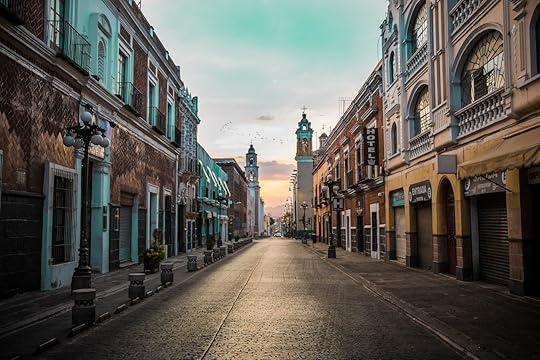
For better or worse (usually worse), Americans are known for celebrating holidays of every kind with themed drinking. Oftentimes, the true purpose of the celebration, or an understanding of why it’s a holiday in the first place, is neglected. One of those holidays is Cinco de Mayo, also insensitively referred to as Cinco de Drinko.
For the unaware, Cinco de Mayo commemorates the Mexican army’s astonishing triumph over the better-equipped invading French army in the small village of Puebla on May 5, 1862. The Battle of Puebla slowed the French as they progressed from the coast to Mexico City. News of the victory traveled up to San Francisco and then the gold mining towns in northern California. Upon receiving word, the Mexican and Mexican-American community in Columbia, California, broke out into a spontaneous celebration lasting into the night. It was the first Cinco de Mayo party although it wasn’t held on the actual date. Cinco de Mayo celebrations spread through the rest of California, then the rest of the country. By the 1960s, the Chicano community was encouraging recognition of the date to honor indigenous Mexicans.
The story is different in Mexico. Comparing how people in the US celebrate Cinco de Mayo versus people in Mexico is difficult because, in short, it’s not widely celebrated in Mexico other than in Puebla.
“[Cinco de Mayo] is mostly celebrated in Puebla where the battle took place that honors this holiday,” says Sofia Partida of Partida Tequila, whose family shared the origins of Mexican traditions with her when growing up. “Puebla goes all out with massive celebrations, parades, and fairs to commemorate the battle that was won there against the French.”
More than 300,000 people visit Puebla in May for the military and cultural parade, battle reenactments on the original battleground, and the ensuing celebrations. There’s no shortage of things to do in Puebla, Mexico’s fourth largest city, a UNESCO World Heritage Center, and the capital of the state of Puebla. Food and drink hold special importance here — by some accounts, it’s the birthplace of mole and is one of the nine states legally allowed to produce mezcal. Leave Puebla, though, and May 5 isn’t a big holiday. It’s pretty much just another normal day.
Contrast that to Cinco de Mayo in the States, which over time has become somewhat of a pop-culture phenomenon filled with unjustified drinking. Many Americans confuse it with Mexican Independence Day, which occurs on September 16th — a misconception that only discredits many of the celebrations in America even further. The company that imported Corona in 1989, Gambrinus Group, had the first big push to link drinking and Cinco de Mayo with a commercial about “Cinco de Corona.” Celebrating on Cinco de Mayo, whether you’re of Mexican descent or not, isn’t the issue — it’s a matter of whether your intentions are in the right place while doing so.
“Cinco de Mayo began as a celebration of the French defeat, but the holiday has grown and changed with time,” Ray Ramos, director of Hacienda Corralejo, says. “For Mexican-Americans in the United States, it has become a complex symbol of Mexican culture, heritage, and character.”
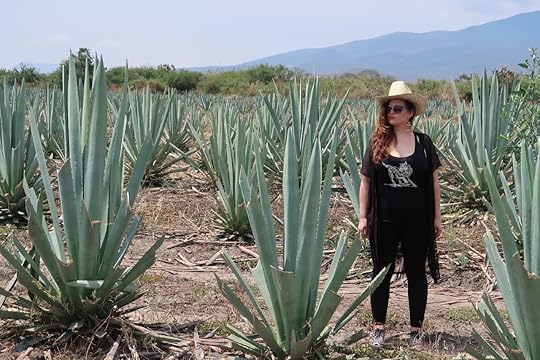
Photo: Montelobos Mezcal
“It’s become an occasion in the US because Mexican celebrations are something we all want to experience and can relate to,” says Mexican-American Camille Austin of Montelobos Mezcal. “Being surrounded by loved ones, eating lots of delicious Mexican food, and enjoying great tequila and mezcal are all things loved by nearly everyone.” That said, without education and respect for the history of the culture of why we are celebrating, the excessive drinking and eating can come off as a bit selfish.
“I think the reason for the discrepancy on how Cinco is celebrated in the US versus Mexico is that the history piece is completely missing from how we celebrate in the US,” Partida explains. “You don’t hear about the Battle of Puebla, or how mole is the traditional dish that is served for the festivities. The Cinco holiday is a good example of another tradition watered down in the US.”
Dressing up in Mexican or French Army attire and reenacting the Battle of Puebla is one way to respectfully celebrate the day. Acknowledging the history and culture through food, drink, and other rituals is another possibility. Enjoying traditional foods like tamales, or paletas, around loved ones and family, along with some margaritas and agave spirits, is an acceptable way to embrace Mexican culture, and many Mexicans (and Mexican-Americans) celebrate similarly.
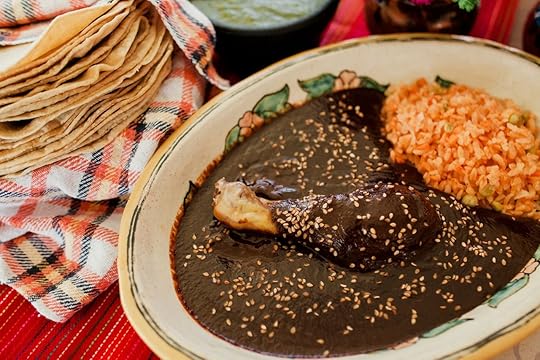
Photo: Marcos Castillo/Shutterstock
Cinco de Mayo’s modern rise in popularity was largely driven by beverage brands trying to capitalize on a relevant occasion for sales (a few of which, I acknowledge, are represented as sources here). Some brands, however, have recently begun to use this massive platform to tie in relevant cultural messaging to raise awareness of what it truly means to celebrate the day. Also, in the modern age where Google has all the answers, ignorance is no longer an excuse. So drink a margarita, share some mezcal with friends and family (maybe paired with some authentic Mexican or Mexican-American dishes), and celebrate the day. Just do so with respect toward the culture that has shared all of those delicious things with us.
“How we see the US celebrate Cinco de Mayo isn’t a bad thing,” Antonio Rodriguez, director of production at Patron Tequila, says. “At the end of the day, we see it as an occasion where you can see the love and appreciate for the Mexican culture and how excited they are about celebrating different Mexican traditions for one day.” 

More like this: The California town that created Cinco de Mayo parties doesn’t celebrate it anymore
The post The real differences between Cinco de Mayo in Mexico and the US appeared first on Matador Network.

Amsterdam gas and diesel car ban

Bicycles are already a primary means of getting around Amsterdam, but it’s about to become pretty difficult to travel in Amsterdam without one pretty soon. In an effort to reduce air pollution, the city council will ban gas-powered cars and motorbikes from driving in Amsterdam starting in 2030. Air pollution is believed to be shortening the life expectancy of Amsterdam citizens by a year, prompting authorities to institute new preventative measures.
The changes are starting sooner than 2030, however. Next year, diesel cars older than 15 years will be banned from driving the A10 ring road around Amsterdam. Public buses and coaches emitting exhaust fumes will also be banned from entering the city center starting in 2022. In 2025, that ban will extend to pleasure crafts on the river and mopeds.
Sharon Dijksma, an Amsterdam city councillor, said, “Pollution is often a silent killer and is one of the greatest health hazards in Amsterdam,” as reported by The Guardian.
To encourage citizens to use more electric and hydrogen cars, the city will install thousands of charging stations around Amsterdam. The goal is to reach 16,000 to 23,000 charging stations by 2025 (there are currently only 3,000).
Amsterdam is following the lead of other cities that have taken steps to reduce their emissions. Last year, Madrid imposed restrictions on cars made before 2000, and Rome has pledged to ban diesel vehicles from the city center entirely by 2024. 
H/T: The Guardian

More like this: The 7 cities making the biggest strides toward sustainability this year
The post Amsterdam to ban all gas-powered vehicles from the city by 2030 appeared first on Matador Network.

Traditional savory Brazilian snacks

Brazil may have a well-deserved reputation for its sweets and desserts, but lovers of savory snacks (salgados, or salgadinhos when a bite-sized version) are also spoilt for choice in the country. Brazil loves its salgados, and a number of these savory treats are a staple of snack bars and street food stalls around the country. No party in Brazil is complete without a table of salgadinhos to accompany sweets like brigadeiro and quindim. The next time you’re in Brazil, these are some of the top savory snacks you need to try.
1. Pao de queijo

Photo: Paulo Vilela/Shutterstock
Pão de queijo (cheese bread) is one of Brazil’s most ubiquitous snacks. It’s served up at snack bars and comes in restaurant bread baskets, but it’s most commonly eaten at breakfast. Essentially, pão de queijo is a small soft bread roll. As the name indicates, cheese (usually parmesan) is one of the key ingredients, along with polvilho (cassava starch). Polvilho is what gives pão de queijo its distinctive light and chewy texture and also makes it gluten-free.
Pão de queijo is often served plain or with butter, but it also comes filled with ingredients like requeijão (a type of cream cheese) and doce de leite (caramelized condensed milk).
2. Coxinha

Photo: Natalia Mylova/Shutterstock
Coxinha is one of the country’s most popular salgadinho. It’s easily recognizable by its distinctive pointed shape, which gives the coxinha its name (coxinha means “little thigh” in reference to a chicken drumstick). It consists of a filling, usually shredded chicken, wrapped in a savory dough made with flour and chicken broth that’s breaded and deep fried. One common version has the shredded chicken mixed with requeijão. There are other fillings, including vegetarian options like palm heart and mushrooms, but those are harder to find.
3. Empadinha

Photo: rocharibeiro/Shutterstock
Empadinhas are another beloved snack throughout the country. They are the small, snack-sized version of the empada, which is a breaded savory pie similar to the Spanish empanada (which, confusingly, is different from the hand-sized Latin American empanada). Empadinhas are made with shortcrust pastry and have a savory filling, usually palm heart, chicken, or prawns. Other ingredients like boiled eggs, cheese, tomatoes, and olives are often used to add flavor and texture.
4. Pastel

Photo: Dado Photos/Shutterstock
Lovers of deep-fried foods will love pastel, a puffed-up, deep-fried savory pie with a thin crust and piping hot filling. The latter comes in a huge variety of options, with minced beef, cheese, palm heart, and prawn being among the most traditional. Pastel is found all over the country, but it is particularly beloved by Paulistas (people from São Paulo). The best pastel is found at the feira (market), accompanied by a chilled cup of garapa (sugar cane juice).
5. Frango a passarinho
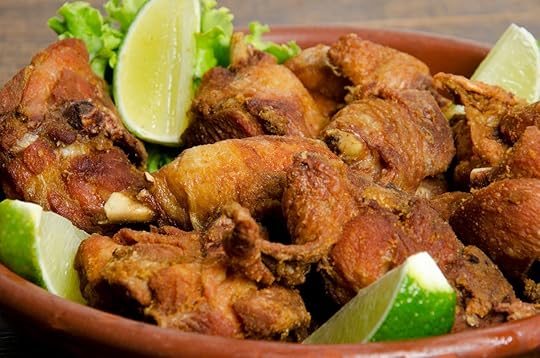
Photo: Brshutters/Shutterstock
If you love fried chicken, chicken wings, and garlic, then you’re in for a treat. Frango a passarinho is a popular bar snack that consists of crispy deep-fried chicken wings absolutely smothered in fried garlic and olive oil, sometimes with a bit of parsley. It’s exactly as unhealthy as it sounds and exactly as delicious.
6. Mandioca frita

Photo: Jaboticaba Fotos/Shutterstock
Mandioca frita, meaning fried cassava, is a popular snack in many Latin American and Caribbean cultures. It’s similar in appearance and preparation to a thick-cut potato fry, but the texture is creamier and the flavor more distinct. Like many fried foods, it goes perfectly with a chilled beer. In some parts of the country, mandioca frita is served with shredded dried beef known as carne seca.
7. Acarajé
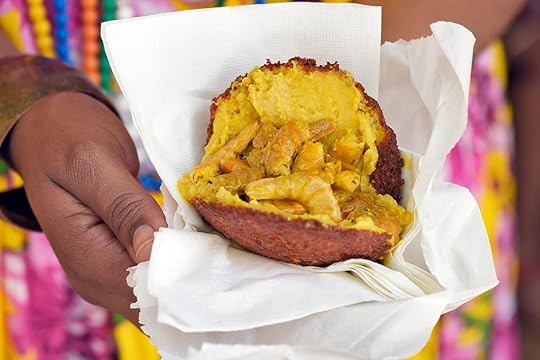
Photo: Elena Stepanova/Shutterstock
Acarajé is a regional specialty of the state of Bahia and is particularly prevalent in the capital of Salvador. Acarajé are made from mashed beans that are shaped into a small oblong ball and fried. Then the ball is split open and stuffed with a spicy filling, usually vatapa (a creamy mix of shrimp and coconut milk). Acarajé is also used as a ritual offering in the Afro-Brazilian religion Candomblé.
8. Bolinho de bacalhau

Photo: rocharibeiro/Shutterstock
Bollinho de dacalhau simply means “little codfish cake,” which is exactly what it is. These fish fritters are made from mashed potato, dried salted codfish, egg, and parsley. They’re part of Brazil’s Portuguese culinary tradition and are equally popular in Portugal, where they are known as pastéis de bacalhau.
9. Esfiha

Photo: rocharibeiro/Shutterstock
Esfiha may not technically be a Brazilian food (the original spelling is “sfiha”), but it’s almost more popular in Brazil than in its native Middle East. Lebanese and Syrian immigration to São Paulo popularized Levantine cuisine in Brazil, and esfiha became one of the country’s most beloved savory snacks. It’s usually filled with a spiced ground beef blend and comes in two versions: open or closed. The open looks like a mini-pizza, similar to a Turkish lahmacun, while the closed is more like a small dumpling and is better for eating on the go.
10. Beiju de tapioca

Photo: Iuliia Timofeeva/Shutterstock
Tapioca is another name for polvilho, the cassava starch that’s the main ingredient in pão de queijo. When water is added, it dries into small clumps that can then be sifted onto a hot griddle pan to produce a chewy pancake. This is known as beiju de tapioca (or just tapioca) and can be topped with any sweet or savory food you can imagine — ham, cheese, eggs, and condensed milk are all popular. It’s a traditional breakfast food in northern Brazil, but it’s also commonly consumed as a quick snack. 

More like this: 8 sweet, fruity, and savory Brazilian desserts you need in your life
The post 10 mouthwatering cheesy, fried, and savory snacks from Brazil appeared first on Matador Network.

Man falls into active volcano
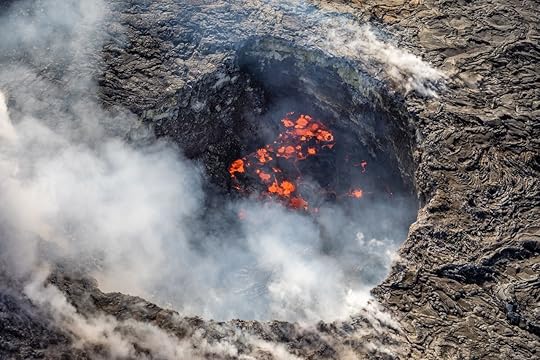
When safety rails are located at the edge of a volcano, they are there for a reason On Wednesday night, a man fell 70 feet into the caldera of Hawaii’s Kilauea volcano, the island’s most active volcano, which famously erupted for three months in 2018 and released the equivalent of 320,000 swimming pools of magma, says Science. The most surprising part of the incident isn’t, however, the man’s lapse in judgement but that he’s still alive.
According to the official statement of the Hawaii Volcanoes National Park, at around 6:30 PM on Wednesday night, a man climbed a metal guardrail at the Steaming Bluff overlook to get a closer look at the spectacle beyond and fell from a 300-foot cliff. He was found at 9:00 PM, injured but alive, on a ledge 70 feet down from the cliff edge and was airlifted to the hospital.
The man’s identity hasn’t been released, and the Park Service is still investigating the incident to determine whether he will face charges for hopping the railing.
Following the incident, Chief Ranger John Broward warned that “Visitors should never cross safety barriers, especially around dangerous and destabilized cliff edges. Crossing safety barriers and entering closed areas can result in serious injuries and death.
The last person to die in Hawaii Volcanoes National Park was in October 2017. According to the New York Times, it was due to a fall. 
H/T: Complex

More like this: 6 active volcanoes you can actually go and see up close
The post Man falls 70 feet into Hawaiian active volcano after jumping a safety barrier appeared first on Matador Network.

May 2, 2019
Kentucky Derby horses how to bet

Among my friends, I am Horse Racing Guy. I’m the one who, when someone suggests Sunday Brunch, counters with, “Or how about we go to the track?!”
Say what you will, but this is definitely better than being Strip Club Guy. Still not as cool as being Boat Guy. But for one weekend a year, being the guy who knows how to bet horses makes you at least a few notches cooler — if only because you can answer the handful of questions that inevitably pop up every time a muggle watches a horse sprint down a track.
The Kentucky Derby is the one day every year when pretty much everyone wants to bet on a horse. Never mind if you don’t know a Superfecta from the SuperFriends, the Derby is infinitely more fun when you’ve got some money on the line. The problem is, it’s not 1926 anymore, so the only people who really know how to bet on horses are me and other Horse Racing Guys. Most of them are over 90. All of them head to Kentucky the first weekend of May.
Since horse tracks are about as tough on IDs as a Cancun liquor store, I’ve been betting on horses since the third grade. It’s been part of my life for long enough that I want the gig to keep going, and as such, I’m always happy to educate any and all novice gamblers during Derby weekend. Though you won’t find any picks for winners here — or (likely) on any of my tickets for this weekend — what follows is all you need to know about how to make a bet on the Kentucky Derby. Or any horse race, for the rest of your life.
Picking your horse

Photo: Cheryl Ann Quigley/Shutterstock
When I said I’d been betting on horses since I was tall enough to reach the window, that doesn’t mean I got any good at it. Horse playing isn’t tennis — you don’t necessarily get better the more you do it. Poorer, yes. But not better. So I’m not going to even pretend to tell you how you should pick a horse. My 14-year-old niece likes to look at their noses. She and I have similar winning percentages.
But you will need to know who the horses are, and, more importantly, how much they pay if you win. You’ll find the horses listed by their post positions — numbered one through 20 — in the Kentucky Derby program. That’s the number on the left side.
Next is the horse’s name. So in this case, one is War of Will. Two is Tax. Three is By My Standards, and so forth. The next number is the odds the horse wins, expressed as a ratio of dollars made on a winning bet to dollars wagered. So if you bet $2 on War of Will, and he pays 20-to-one odds, you’ll get about $42 back ($40 plus your original $2 investment).
Generally, better horses pay less. So if you bet $2 on Omaha Beach, who at the time of publication was the favorite to win the Kentucky Derby, you’d only get $10 back if he wins. You’ll probably have a better chance of winning, but you also will make less money. The more times you work through this process, the more you learn that life is full of important choices, and this is among its most essential.
Odds change right up until the race starts depending on how much money is wagered on a particular horse. So you may bet on a horse that has 20-to-one odds, but by the time the race starts the odds have dropped to four to one. Guess what? If it wins you only get paid at four to one, no matter what the odds were when you bet. Is it heartbreaking to see your 75-to-one longshot only pay three-to-one odds when it wins? No. Heartbreaking is seeing odds drop to three to one, then still watch the horse finish dead last. This happens to me at least once a week.
Types of bets

Photo: ILYA GENKIN/Shutterstock
If this is your first time betting horses, you might think horse wagering is simply picking the horse you think will win the race, betting on it, and jumping up and down for a few minutes and asking someone near you who seems a little more sober than you, “Did we win??”
My friend, that’s just the beginning.
This is the simplest form of wagering, called making a WIN bet. A WIN bet is betting on one horse to win the race. If it wins, you’ll collect based on its odds.
If you like a horse, but want to make money if it finishes first OR second, you can make a PLACE bet. It will pay less than a WIN bet, and you won’t know exactly how much until the race results are declared official, usually five minutes after the race.
A SHOW bet pays if your horse finishes first, second, or third. Only little old ladies and eight-year-olds make show bets.
The people who make money* betting horses, however, don’t just bet WIN, PLACE, or SHOW. The real money, especially at the Kentucky Derby, is made by picking the top two, three, or four horses in the order they will finish.
Exactas, Trifectas, and Superfectas

Photo: ksb/Shutterstock
An EXACTA bet is where you pick the horses you think will finish first and second in the race. So if you think Omaha Beach (Horse 12) will win and Roadster (Horse 17) will finish second, you would make a 12-17 EXACTA bet. If you like both of those horses but aren’t sure who will win and who will be second, you would make an EXACTA BOX bet. This means you win if they both finish in the top two, regardless of order. This bet costs double what an exacta would, so a $2 EXACTA would be a $4 EXACTA BOX.
Extending that another place, you can bet a TRIFECTA and pick the horses who will finish first, second, and third. You would make the bet in the order you think the horses will finish, so if you like Omaha Beach (12) to finish first, Roadster (17) to finish second, and Game Winner (16) to finish third, you would bet a 12-17-16 TRIFECTA. Typically the minimum bet on a TRIFECTA is $1. Since picking the order of three horses is a little harder, many people opt to make a TRIFECTA BOX bet, which means you pick three horses and if they finish in the top three, in any order, you win. This bet costs $6. You can bet this in any order since it doesn’t matter where they finish. So, in this case, you’d bet a 12-16-17 TRIFECTA BOX. Or just “Tribox” if you wanna sound like a salty old railbird.
Finally, if you wanna go for the BIG bucks you can try betting a SUPERFECTA, which is picking the horses that finish first, second, third, and fourth. There is about as much strategy in picking SUPERFECTA as there is in picking Chinese penny stocks, and they’re typically only bet by people who also spend a good portion of their income on scratch tickets.
That said, the minimum bet is often only 20 cents, and boxing four horses in a SUPERFECTA (meaning they can finish in any order so long as they’re all in the top 4) costs a fat $2.40. This is a fun option if you want to throw it to the wind and see what happens. Plunk down $24 on a SUPERFECTA box and win, and you might legitimately have to visit the IRS window before collecting your winnings, making the track the only place in the world where your best day involves seeing the IRS.
Beyond these options, you can also bet things like the Pick 6, where you pick the winner of six consecutive races. Or the Daily Double, which is picking two straight races, which in no way involves answering any racing trivia in the form of a question or referring to the guy at the betting window as “Alex.”
Making your bet

Photo: jessica.kirsh/Shutterstock
Once you’ve picked your horse or horses and decided how you want to bet, it’s time to make your way to the betting window. I encourage you to have a drink before you do this. Not to diminish the fine, fine people who work our nation’s betting windows, but some of them may have actually worked at the first Kentucky Derby. That is to say, things tend to move a bit slowly.
The smallest bet you can make is $2. This may be confusing, as I earlier said you can bet a $1 trifecta or a 20 cent Superfecta. But you must make enough bets to spend at least $2, or you’re going to be part of the problem holding up the line. The good news is that this number does not change with inflation as I was making $2 bets when it was my whole week’s allowance. I make almost double that now as a travel writer and still make $2 bets.
All bets are made in the following order: Dollar Amount, Type of Bet, Number (or numbers) of horses. If you like Omaha Beach and want to bet him to win, you’d confidently stride up to the betting window and say, “I’d like $2 to WIN on 12.”
If you want to bet Omaha Beach and Roadster to finish first and second, you would say “I’d like a $2 Exacta 12-17.”
This formula stays the same no matter how you’re betting. The people at the betting window don’t care about the horse’s name, even if your betting strategy is the tried-and-true “prettiest name.” Tell them you want to bet $2 on Omaha Beach and they’ll look at you like you just asked them for a mint julep.
You may make as many bets as you like. Theoretically, you could just bet on every horse in the race to make sure you win one bet, but just remember that you could also bet on red and black every time a roulette wheel goes around. Neither is going to make you any money.
Armed with this info, you’re now ready to embark on a full day of wholesome family fun. Or an entire life of smoking cigars and cursing at animals who can’t understand you. Either way, knowing how to bet on horses will make you look cooler, smarter, and more worldly to all your non-horse-playing friends — at least for one glorious day a year.
*Nobody ever, in the history of horse racing, has MADE money betting horses. They’ve had a few good days. And they’ve lied. 

More like this: Why Americans don ridiculous hats for the Kentucky Derby
The post How to bet on horses at the Kentucky Derby appeared first on Matador Network.

EU teenagers rail pass giveaway

European teenagers might find their summer travel plans to be cheaper than ever this year. The DiscoverEU initiative is offering 18-year-old citizens of Europe the chance to travel by rail, for free, to one or more EU countries. There are 20,000 passes available, and successful applicants must take their trip — not exceeding 30 days in length — between August 1 and January 31, 2020. The program is open only to those born between July 2, 2000, and July 1, 2001, and you must apply before 11:00 AM British Summer Time on May 16. Applications open on May 2.
Successful applicants are expected to become ambassadors for the program and write about their experiences on social media, such as Instagram, Facebook, and Twitter using #DiscoverEU. Applicants should note that while the EU will pay for transport in full, it will not cover the cost of accommodation, travel insurance, or make any itinerary arrangements. According to the website, the promotion is designed to “give you the chance to meet like-minded travellers, become more independent and confident as well as explore your EU identity.”
Tibor Navracsics, European commissioner for education, culture, youth, and sports said he hopes the DiscoverEU giveaway will “inspire young people to become engaged in their communities and become ambassadors for Europe. Whether it’s voting in the European Parliament elections, encouraging their peers to do the same, or working with us to build lively societies”.
Navracsics wants to eventually make the competition permanent and is asking for $782 million from the EU budget to fund tickets for 1.5 million teenagers over the next seven years.
Although the UK is planned to leave the EU this fall, British teenagers are able to apply for the DiscoverEU free rail pass and enjoy traveling freely around Europe before things change forever for UK citizens.
You can apply for the tickets individually or as a group of up to five people. To apply, fill out an online application, including a short quiz, and answer a subsidiary question. A selection panel will award the tickets accordingly. 
H/T: The Guardian

More like this: The 11 most beautiful train stations around the world
The post European teens can get a free rail pass to travel this summer appeared first on Matador Network.

Guide to Argentinian barbecue
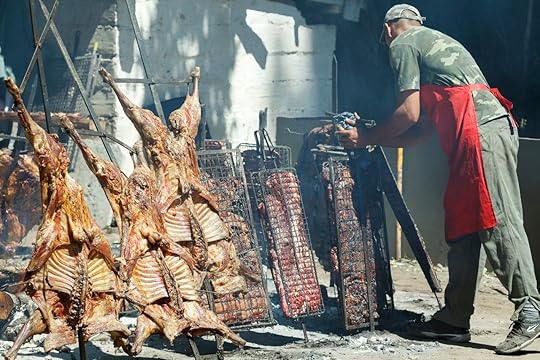
If you know only one thing about Argentinian cuisine, it’s that the country loves its meat and its asados, or barbecues. Pioneered by gauchos (cowboys) in the early 1800s and embraced by the country as a whole, it’d be a shame to visit Argentina without getting a taste of everything grilled. The only question is where and how to start.
Asados are everywhere in Argentina, from apartments in big cities, to large ranch gatherings, to the humble asados on the side of the road. More than just a barbecue, an asado is an event with food, drinks, and friends that can last all day and long into the night. You generally have to know someone to get invited to an asado (though some companies hold asados on ranches for tourists), but parrillas, or steakhouses, are the next best bet to eating the meats that make asados so appealing.
Whether you’re lucky enough to be invited to an asado by a local or are sticking to a parrilla in the city, the meal isn’t complete without a local Mendoza malbec wine or Fernet and Coke. But the first thing you need to know is what meats to order.
What to order at an Argentinian parrilla or asado

Photo: rocharibeiro/Shutterstock
The cuts of meat available depend on where you’re at, but there are few more common cuts you’re likely to encounter.
Tira de asado: A cut similar to beef short ribs and grilled only with salt. This large cut of fatty meat is usually one of the first to come off the grill in an asado.
Vacio: A boneless cut from around the belly of the cow. It’s less fatty than the tira de asado but still juicy and goes great on a sandwich. A whole vacio can weigh around five pounds and is perfect for the large group setting of an asado.
Matambre: A flank steak that’s eaten in several ways. One is to stuff it with cheese, eggs, carrots, and other vegetables. There’s nothing wrong with eating it as a simple steak with chimichurri, either. One off-beat style is matambre a la pizza, which is exactly what it sounds like: a big piece of meat covered with tomato sauce and mozzarella.
Entraña: The same as a skirt steak in the US, this is a cheaper cut that’s still juicy and tender when cooked right.
Tapa de asado: The rib cap that’s not as tender as the other cuts but is a classic nonetheless. This cheaper boneless cut is less fatty and a bit drier than the others. Typically served pink in the middle.
Bondiola: A fatty and juicy cut of pork for when you’re not in the mood for beef. It also makes for a great sandwich.
Side meats to go along with your asado meats

Photo: funkyfrogstock/Shutterstock
A good variety of sausages and achuras, or offals, are needed to have a true and full asado. The tasty combo of meat and achuras is completed by the unmissable and unforgettable provoleta, which is a tasty grilled provolone cheese that melts in your mouth. All of these come with french fries on the side and the mandatory chimichurri and salsa criolla (onion relish). These are some of the most popular achuras to round out your barbecue.
Chorizo: This sausage can be eaten by itself, but it’s almost always eaten in a sandwich called choripan, which comes from the words chorizo and pan (bread). Don’t be stingy with the chimichurri as it’s a perfect match for the sausage.
Morcilla: Blood sausage that’s similar to what you’ll find in other blood-sausage-consuming countries. The blood is mixed with enough filler to become solid when cooked, and morcilla is commonly eaten alongside chorizo or in a sandwich called a morcipan.
Mollejas: If you are willing to spend some money on achuras, be sure to spend it on mollejas. The name translates to sweetbreads, but it’s made with a cow’s thymus gland. Mollejas are beloved by almost everyone and are a little slice of heaven turned into food when served with some lemon and salt.
Chinchulín: The small intestines of a cow, chinchulín can be a risky bet. When correctly prepared, it’s crunchy and delicious, but it can be rubbery and taste a bit strong if not done right. So, if you’re feeling adventurous, try this achuras with extra lemon and salt.
The best parrillas in Buenos Aires

Photo: TORWAISTUDIO/Shutterstock
So what happens if you’re not fortunate enough to be invited to a local asado? Don’t worry, there are parrillas on every corner in Buenos Aires.
If you want to splurge, go to the fanciest parrillas in the Palermo neighborhood, such as La Cabrera or Don Julio. If you don’t want to lose an eye to eat a great piece of meat, you can also go to the parrillas de barrio. These are the little parrillas that you can find at any neighborhood. Some choice options include Los Chanchitos in Villa Crespo, El Tano in Avellaneda, El Boliche de Darío in Caballito, and El Desnivel in San Telmo.
If you’re more into street food and on a tight budget, then the Carritos de la Costanera are what to look for. These are a sort of food cart parked on the riverside, and on weekends, the carts prepare meat sandwiches with toppings like tomato, lettuce, fried egg, ham, and cheese.
With a base knowledge of what to meats to order in Argentina, all that’s left is to follow your nose the next time the smell of asado comes your way. 

More like this: The best places to eat in Buenos Aires right now
The post Everything you need to know about asados in Argentina appeared first on Matador Network.

Cinco de Mayo celebration US origins

Sometime in late May or early April of 1862, the May 27 edition of the San Francisco newspaper La Voz de Mejico reached Tuolumne Country in northern California. It had traveled by steamboat to Stockton, then by stagecoach to Sonora and the rest of the county. One of the top stories was about a battle the Mexican army won against the better-equipped French in Puebla, Mexico. The headline read, “Long live Mexico!!! Long live independence! Long live the valiant Mexican soldiers! Long live the heroic General Zaragoza and his comrades!”
When the news finally hit the Tuolumne County town of Columbia, people lit up. They celebrated with drinks, songs, banquets, and a party that lasted until 10:00 PM. It was the first Cinco de Mayo party in the US and set the tone for more than a century and a half of Cinco de Mayo parties to come.
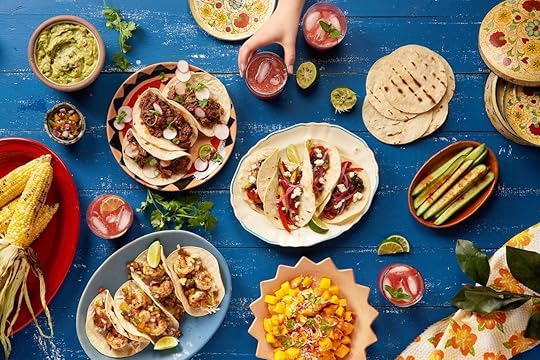
Photo: The Food Group/Shutterstock
These days, Cinco de Mayo parties seem to be just about everywhere. They shut down main street in Deadwood, South Dakota, and give Vermonters in Burlington a reason to drink tequila. It inspires no shortage of events around the entirety of Birmingham, Alabama. Not to mention the parties in large cities like Houston, Los Angeles, and San Francisco.
Yet it’s no longer celebrated in Columbia. The story of Cinco de Mayo in America is one of immigration and economics, history and culture, and that story no longer resonates with the people of Columbia.
The long history of Cinco de Mayo in Columbia is no secret. A story by David Hayes-Bautista and Cynthia Chamberlin in CHISPA, the Tuolumne County Historical Society’s quarterly publication, lays out in vivid historical detail all that went down before and during that fateful day in 1862. Still, Columbia is just fine separating itself from its history of the mid-1800s — despite the fact that the town itself has been a state historic park since the 1940s.
City leaders have had enough of stories about Columbia and Cinco de Mayo as well, it seems. Emails to Columbia’s government went unanswered, but a volunteer for the park’s archives, Sherrin Grout, told the Union Democrat in 2017 that Cinco de Mayo isn’t commemorated because it’s around the same time as the annual Fireman’s Muster, which started in the late 1950s and continues to this day. That same year, Gary Neubert, a board member of the Columbia Chamber of Commerce, told the gold country publication My Mother Lode that, “Interest in Columbia being the home of Cinco de Mayo celebrations seems to be very low. We tried to stir interest a few years ago during the 150th anniversary and for the most part, residents here just don’t find it to be a big deal.”
To understand why, it’s best to understand how Columbia became ground zero for Cinco de Mayo.

Photo: Jakub Zajic/Shutterstock
Modern-day California was part of the Spanish empire in the 1600s, then part of Mexico starting in 1821. At the conclusion of the Mexican-American War in 1848, California became a US territory. The gold rush started in 1849, and on September 9, 1850, California became the 31st state. Just two years out from being a part of Mexico, California had a noted Mexican heritage. The gold rush only increased that connection as prospectors and miners from Mexico went north to find their fortune.
All this is to say that the Mexican population in northern California at the time was substantial, and news from Mexico was regularly reported in Spanish-language newspapers. People with ties to Mexico had many reasons to be paying attention to the news: French emperor Napoleon III violated the Monroe Doctrine and invaded Mexico in 1862 while America was busy fighting the Civil War. Another reason was the Civil War, Hayes-Bautista and Chamberlin write in their historical account of Cinco de Mayo. People from Mexico were against slavery (the country abolished slavery in 1829), and California was admitted as a free state.
In 1862, the French were quickly advancing from the coastal town of Veracruz to Mexico City, and the Confederacy was winning battle after battle against the Union. Then, the incredible happened: The Mexican army won a battle on May 5 in Puebla. It was some of the first good wartime news.
A letter writer who went by the initials A.M. wrote to La Voz de Mejico, which first delivered the news to Columbia, that there was “incomparable joy with which the satisfying news of our triumph against the French were received.” There was a “spontaneous celebration” due to the news, according to records dug up by Hayes-Bautista and Chamberlin, with people “firing salutes and with banquets at which we have drunk to Mexico and sung some patriotic songs.”
The next year, the nearby town of Sonora hosted the celebration for the entire county (this time on the actual date of May 5). The party spread over time to larger cities in northern California like San Francisco, and then down to southern California cities like Los Angeles, and then to other parts of the country. Nearly 100 years later in the 1960s, according to the History Channel, Chicano activists were encouraging Cinco de Mayo celebrations as a way to honor indigenous Mexicans.
But by that time, Columbia had already moved past its Cinco de Mayo history. Tuolumne County went from just over 16,000 people in 1860 to around 8,000 people in 1870. Today, Columbia has around 2,300 residents. Around 92 percent speak only English at home, and 7.6 percent, or 177 people, identify as Hispanic or Latinx.
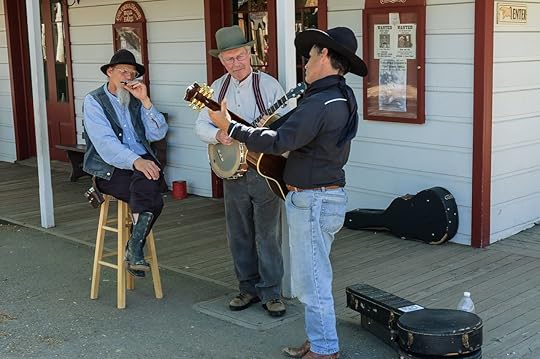
Photo: Pierdelune/Shutterstock
On the Columbia city government’s calendar, spring through summer is packed with events. Cinco de Mayo is not one of them. The only event in the first weekend of May in 2019 is on May 4, and it’s the aforementioned Firemen’s Muster, which features a parade, horse cart races, and firemen competitions like a bucket brigade and a hand-pumped-water contest.
Americans rarely pass up a chance to party, even if the reason for the party doesn’t relate to your heritage or culture. Chicago, for example, dyes its entire river green for St. Patrick’s Day despite less than eight percent of the population claiming Irish ancestry. For a town as connected to history as to have the town be a state historic park, Columbia seems to have a selective memory of the history it wants to promote. As for the rest of the country, the US has its own problems with celebrations that lean more toward culturally oblivious than culturally aware. Nothing, however, can take away the joy from that first Columbia party.
The first Cinco de Mayo celebration was about recognizing small wins in the fight for freedom and democracy. Freedom has so far won out, and included in that freedom is the choice to not celebrate the country-wide party your town started. 

More like this: How the Margarita took over America — and lost its soul along the way
The post The California town that created Cinco de Mayo parties doesn’t celebrate it anymore appeared first on Matador Network.

Matador Network's Blog
- Matador Network's profile
- 6 followers



